Low Carb Potato Substitutes: 13 Keto Potato Alternatives
Potatoes are carbohydrate heavy which is why some people may want to use an alternative. During my health coaching sessions some clients have asked me about alternatives to them for various different reasons. Therefore, let’s find out the best low carb potato substitutes.
The following are the best low carb potato substitutes:
- Cauliflower
- Turnips
- Rutabaga
- Daikon radish
- Celeriac
- Butternut squash
- Acorn squash
- Broccoli
- Kohlrabi
- Brussels sprouts
- Pumpkin
- Kabocha
- Zucchini
In this article I will compare their carbohydrates and nutrients side-by-side. In addition, I’ll examine their tastes, textures and how you may want to use them in your dishes.
In addition to coaching clients about potatoes, I’ve purchased, researched and used the alternatives in this article prior to, during and sometimes after writing this article.
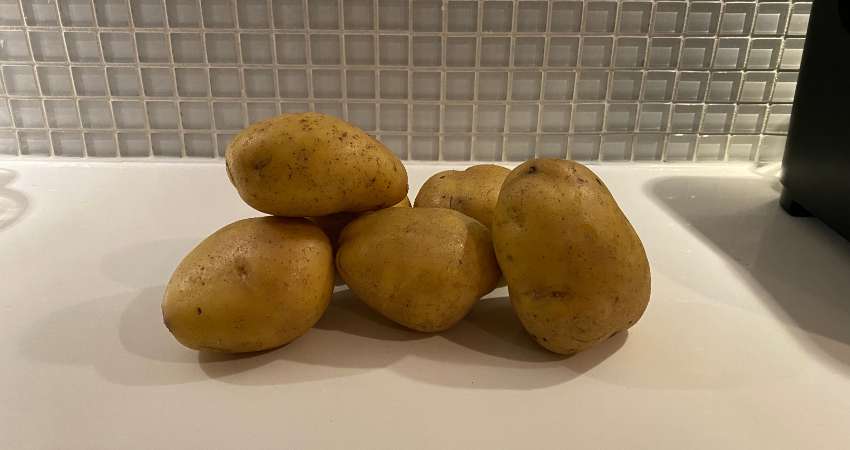
Low Carb Potato Substitutes
1. Cauliflower
As a cruciferous vegetable, cauliflower has a low number of carbohydrates at only 4.9 grams per 100 grams, a little more than one cup.
Cauliflower has 10.9 grams fewer carbohydrates per 100 grams.
Let’s take a look at their carbohydrates and nutrients.
| Potato, raw (100 g) | Cauliflower, raw (100 g) | |
| Calories | 69 | 25 |
| Protein | 1.68 g | 1.92 g |
| Carbohydrates | 15.7 g | 4.9 g |
| Fiber | 2.4 g | 2 g |
| Fat | 0.10 g | 0.28 g |
| Sugar | 1.15 g | 1.91 g |
Nutrient Resources1 ((USDA: Potatoes, white, flesh and skin, raw))
In addition to the carbs, cauliflower has a bit more than a third less calories per 100 grams. Therefore, if you’re looking for a low-calorie, low carb choice, this is a really good option.
It’s also higher in:
- Choline
- Folate
- Vitamin C
- Vitamin K
In addition, cauliflower is one of the most versatile foods for recipes out there. You can prepare it in many ways including:
- Mashing it
- Roasting it
- Baking it
- Frying it
You can even find cauliflower rice, pizza crust, bread, tortillas at many health grocery stores. Kraft even makes a cauliflower Mac and cheese, making it a great choice for many foods.
I’m using mashed cauliflower at home more and more. If you haven’t mashed them before, give it a try.

2. Turnips
Turnips have 6.4 grams of carbohydrates per 100 grams, 9.3 grams fewer carbohydrates per 100 grams.
| Potato, raw (100 g) | Turnips, raw (100 g) | |
| Calories | 69 | 28 |
| Protein | 1.68 g | 0.90 g |
| Carbohydrates | 15.7 g | 6.4 g |
| Fiber | 2.4 g | 1.8 g |
| Fat | 0.10 g | 0.10 g |
| Sugar | 1.15 g | 3.80 g |
Nutrient Resources2
They have 4.6 grams of net carbs per 100 grams.
In addition, turnips are a great option if you’re looking for a low-calorie, low carb option. Per 100 grams, they have less than half the calories. It also carries significantly more of the following:
- Calcium
- Vitamin C
You might be thinking of the slightly sweet, crunchy and almost watery taste of raw turnips, but their consistency can be similar to potatoes when cooked.
You can use a turnip to do almost anything including in the following recipes:
- Bake them
- Mash them
- Fry them
- Blend them into soups
- Tots
- Fries
Just make sure to boil the turnips beforehand, so they get a similar consistency.
The video below has some low-carb potato alternatives.
3. Rutabaga
Rutabaga has 8.6 grams of carbohydrates per 100 grams, 7.1 grams fewer carbohydrates per 100 grams.
Let’s take a look at their carbohydrates and nutrients.
| Potato, raw (100 g) | Rutabaga, raw (100 g) | |
| Calories | 69 | 37 |
| Protein | 1.68 g | 1.08 g |
| Carbohydrates | 15.7 g | 8.6 g |
| Fiber | 2.4 g | 2.3 g |
| Fat | 0.10 g | 0.16 g |
| Sugar | 1.15 g | 4.46 g |
Nutrient Resources3
They have 6.3 grams of net carbs per 100 grams.
In addition, rutabagas have considerable less calories. They have slightly less protein and almost the same fiber.
Rutabagas have more of the following:
- Calcium
- Vitamin C
- Folate
Rutabaga is basically a combination between a cabbage and a turnip. Although it sounds like an unlikely match, rutabagas can be delicious. They’re very popular in Sweden, which is where they get their nickname (swede) from.
They work great in:
- Soups
- Stews
- Any recipe calling for mashed or blended potatoes.
Try peeling and dicing a rutabaga next time you make a vegetable soup. You won’t even miss the potatoes.
For almost all Thanksgivings at home, I mash them up in addition to potatoes and sweet potatoes.
4. Daikon Radish
Daikon radish has 3.3 grams of carbohydrates per 100 grams, 18.3 grams fewer than potatoes.
Let’s examine the carbohydrates and nutrients side-by-side:
| Potato, baked (100 g) | Daikon radish, cooked (100 g) | |
| Calories | 93 | 38 |
| Protein | 1.96 g | 0.67 g |
| Carbohydrates | 21.6 g | 3.3 g |
| Fiber | 1.5 g | 1.5 g |
| Fat | 0.10 g | 2.63 g |
| Sugar | 1.70 g | 1.80 g |
If your goal is a low-carb diet, daikon radishes is one of the best low carb foods..
In addition, daikon radish has more of the following recipes:
- Calcium
- Folate
- Vitamin A
Daikon is a type of radish very common in Japanese cuisine and other East Asian cultures.
It’s usually consumed raw or pickled in Japan but tastes surprisingly similar to potatoes when baked or boiled.
Try peeling the daikon and baking it with a little bit of salt and olive oil. This will help find the salty satisfaction at a fraction of the carbs.
When I decide to use them, I find them easily in the produce section of my local supermarket as shown in the picture below.
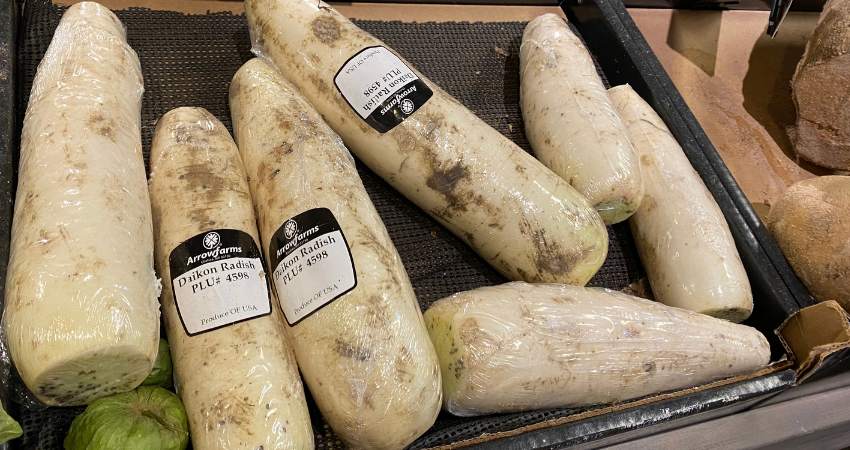
5. Celeriac (Celery Root)
Celery root has 9.2 grams of carbohydrates per 100 grams, 6.5 grams fewer.
Let’s examine the carbohydrates and nutrients side-by-side:
| Potato, raw (100 g) | Celeriac, raw (100 g) | |
| Calories | 69 | 42 |
| Protein | 1.68 g | 1.50 g |
| Carbohydrates | 15.7 g | 9.2 g |
| Fiber | 2.4 g | 1.8 g |
| Fat | 0.10 g | 0.30 g |
| Sugar | 1.15 g | 1.60 g |
Nutrient Resources6
The following video explains to you how to make celeriac.
If you’re counting calories or carbs, celeriac contains less.
In addition, celeriac has more of the following:
- Calcium
- Iron
- Zinc
Celeriac is literally the root of celery. While it may not look pretty on the outside, once peeled it looks similar to a potato.
Celeriac tastes great when baked in bite-sized pieces. It also makes a great mash and you can do the following:
- Bake
- Use in soups
- Roast
6. Butternut Squash
Butternut squash has 11.7 grams of carbohydrates per 100 grams, 4.0 grams fewer carbohydrates per 100 grams.
Let’s take a look at their carbohydrates and nutrients.
| Potato, raw (100 g) | Butternut squash, raw (100 g) | |
| Calories | 69 | 45 |
| Protein | 1.68 g | 1.00 g |
| Carbohydrates | 15.7 g | 11.7 g |
| Fiber | 2.4 g | 2.0 g |
| Fat | 0.10 g | 0.10 g |
| Sugar | 1.15 g | 2.20 g |
Nutrient Resources7
Butternut squash is lower in calories and full of good things the body needs to function properly. They have 9.7 grams of net carbs per 100 grams.
It contains more:
- Calcium
- Magnesium
- Vitamin C
- Vitamin A
- Folate
It can be used for the following recipes:
- Mash
- Roast
- Air fry
- Soups
- Fries
- Tots
In the stores, butternut squash can be found pre-cut for noodles, cubes and zig zags. Therefore, it can be used for more than a low carb potato substitute.
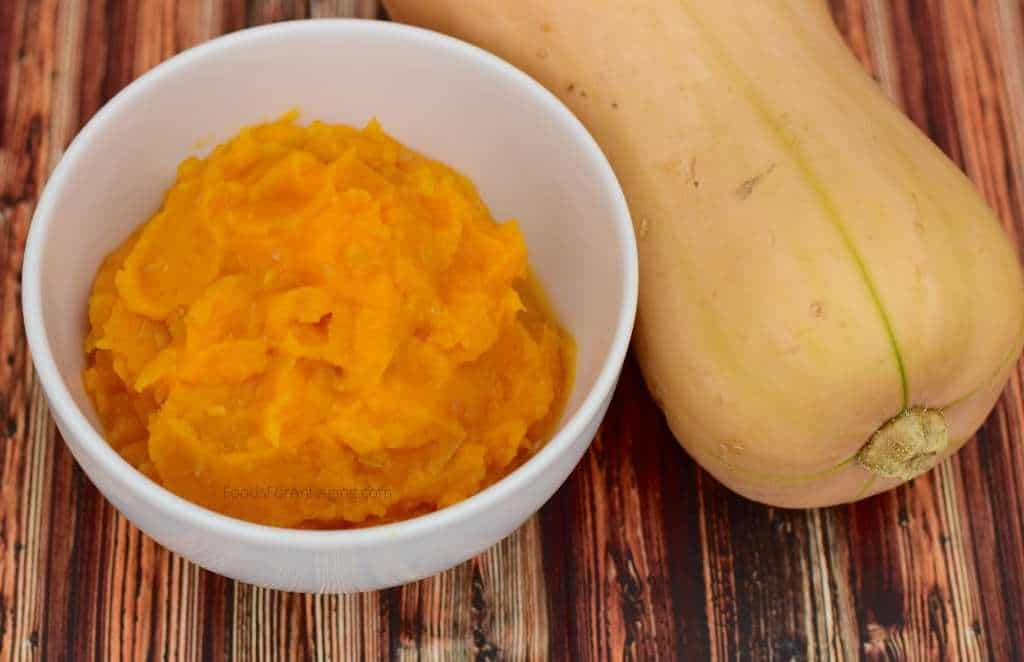
7. Acorn Squash
Acorn squash has 10.4 grams of carbohydrates per 100 grams, 5.3 grams fewer.
Let’s examine the carbohydrates and nutrients side-by-side:
| Potato, raw (100 g) | Acorn squash, raw (100 g) | |
| Calories | 69 | 40 |
| Protein | 1.68 g | 0.80 g |
| Carbohydrates | 15.7 g | 10.4 g |
| Fiber | 2.4 g | 1.5 g |
| Fat | 0.10 g | 0.10 g |
| Sugar | 1.15 g | 2.46 g |
Nutrient Resources8
In addition, acorn squash has less calories. They have 8.9 grams of net carbs per 100 grams.
Acorn squash has more of the following:
- Calcium
- Vitamin C
- Vitamin A
Acorn squash can be used for the following:
- Mash
- Roast
- Bake
- Air fryer
- Fries
- Tots
The video below shows you how to make mashed acorn squash.
8. Broccoli
Broccoli has 6.2 grams of carbohydrates per 100 grams.
Let’s examine the carbohydrates and nutrients side-by-side:
| Potato, raw (100 g) | Broccoli, raw (100 g) | |
| Calories | 69 | 32 |
| Protein | 1.68 g | 2.57 g |
| Carbohydrates | 15.7 g | 6.2 g |
| Fiber | 2.4 g | 2.4 g |
| Fat | 0.10 g | 0.34 g |
| Sugar | 1.15 g | 1.40 g |
Nutrient Resources9
Broccoli is another great option if you’re looking for a low-calorie choice. For 100 grams of both, broccoli has less than half the calories. It also carries significantly more of the following:
- Folate
- Vitamin A
- Vitamin C
- Vitamin E
- Vitamin K
- Calcium
Broccoli also boasts a bit more protein, so that’s a plus.
It makes a great mashed recipes substitute. As a mash, picky kids even like it better than eating regular broccoli. Many of my health coaching clients are using it for their kids with great success.
I make mashed broccoli all the time for myself at home and absolutely love it.
It can also be roasted. Some people will remove half the number of potatoes and add in broccoli as a combination side dish.
Broccoli is one of the favorite low-carb alternatives.
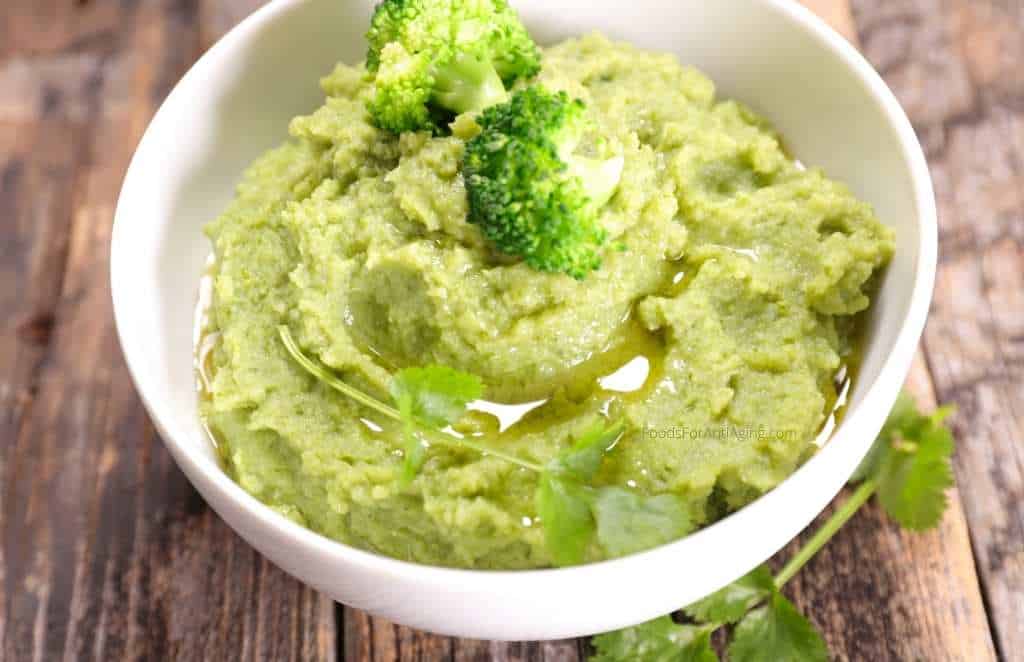
9. Kohlrabi
Kohlrabi has 6.2 grams of carbohydrates per 100 grams, 9.5 grams fewer.
Let’s examine the carbohydrates and nutrients side-by-side:
| Potato, raw (100 g) | Kohlrabi, raw (100 g) | |
| Calories | 69 | 27 |
| Protein | 1.68 g | 1.70 g |
| Carbohydrates | 15.7 g | 6.2 g |
| Fiber | 2.4 g | 3.6 g |
| Fat | 0.10 g | 0.10 g |
| Sugar | 1.15 g | 2.60 g |
Nutrient Resources10
In addition, kohlrabi has fewer calories. They have similar protein and 50% more fiber.
Kohlrabi has more of the following:
- Calcium
- Vitamin C
- Vitamin A
Kohlrabi is a bulb-like root looking like an oversized spaceship. It tastes almost like a broccoli stem but better. Kohlrabi can be eaten raw.
Kohlrabi can be used for the following:
- Mash
- Roast
- Bake
- Air fryer
- Fries
- Tots
10. Brussels Sprouts
Brussels sprouts have 8.9 grams of carbohydrates per 100 grams, 6.8 grams fewer.
Let’s examine the carbohydrates and nutrients side-by-side:
| Potato, raw (100 g) | Brussels sprouts, raw (100 g) | |
| Calories | 69 | 43 |
| Protein | 1.68 g | 3.38 g |
| Carbohydrates | 15.7 g | 8.9 g |
| Fiber | 2.4 g | 3.8 g |
| Fat | 0.10 g | 0.30 g |
| Sugar | 1.15 g | 2.20 g |
Nutrient Resources11
Brussels sprouts are one of the few options which contain fewer calories and carbohydrates but more protein and fiber.
In addition, brussels sprouts have more of the following:
- Calcium
- Vitamin C
- Vitamin A
- Iron
- Zinc
- Folate
Brussels sprouts used to be a vegetable kids and many adults disliked eating. Now, it’s one of the most popular appetizers in many restaurants.
These little cabbages managed to turn around their reputation and become a hot topic in the food scene. Low-carb may be a big reason why.
A restaurant I frequently visit for lunch offers a Brussels sprouts salad that’s amazing. I order it all the time.
Brussels sprouts can do many things potatoes can. You can bake them, boil them, fry them and roast them. You can even make mashed Brussels sprouts.
The video below will let you know how to make mashed pumpkin.
11. Pumpkin
Pumpkin has 6.5 grams of carbohydrates per 100 grams, 9.2 grams fewer than potatoes. Many people don’t realize how low-carb it is.
Let’s examine the carbohydrates and nutrients side-by-side:
| Potato, raw (100 g) | Pumpkin, raw (100 g) | |
| Calories | 69 | 26 |
| Protein | 1.68 g | 1.00 g |
| Carbohydrates | 15.7 g | 6.5 g |
| Fiber | 2.4 g | 0.5 g |
| Fat | 0.10 g | 0.10 g |
| Sugar | 1.15 g | 2.76 g |
Nutrient Resources12
They have 6.5 grams of net carbs per 100 grams.
If you’re counting calories or carbs, pumpkin is a good choice because it contains about half the amount of each.
Pumpkins are 90% water but have more of the following:
- Calcium
- Vitamin A
- Iron
- Zinc
Pumpkins are typically used for soups, pies or bread but taste great mashed also. Many people think it’s a vegetable but its actually a fruit.
Fun fact: The largest pumpkin ever grown weighed 1,140 pounds.
Mashed pumpkins will taste sweeter. They are more like sweet potatoes for taste and texture. For better results use small sugar pumpkins instead of the large ones.
In addition to mashed, they can be cooked for the following:
- Fries
- Tots
- Roasting
- Baking
Find out the best choices for russet potatoes in my article, Russet Potatoes Substitute: 13 Healthy Alternatives.
12. Kabocha
Kabocha has 8.2 grams of carbohydrates per 100 grams, 7.5 grams fewer.
Let’s examine the carbohydrates and nutrients side-by-side:
| Potato, raw (100 g) | Kabocha, raw (100 g) | |
| Calories | 69 | 35 |
| Protein | 1.68 g | 1.18 g |
| Carbohydrates | 15.7 g | 8.2 g |
| Fiber | 2.4 g | 1.2 g |
| Fat | 0.10 g | 0 g |
| Sugar | 1.15 g | 0 g |
Nutrient Resources13
If your goal is low carb, kabocha contains less. They have 7.0 grams of net carbs per 100 grams.
In addition to low-carb, kabocha has more of the following:
- Calcium
- Vitamin C
- Potassium
The flesh is a dark yellow. It tastes like carrot and sweet potato mixed together. It’s slightly sweet but not as sweet as a sweet potato.
Favorite additions include the following:
- Salt
- Coconut oil
- Cinnamon
- Nondairy milk
- Honey
Many people enjoy making small chunks called bites.They may also be mashed, roasted and baked.
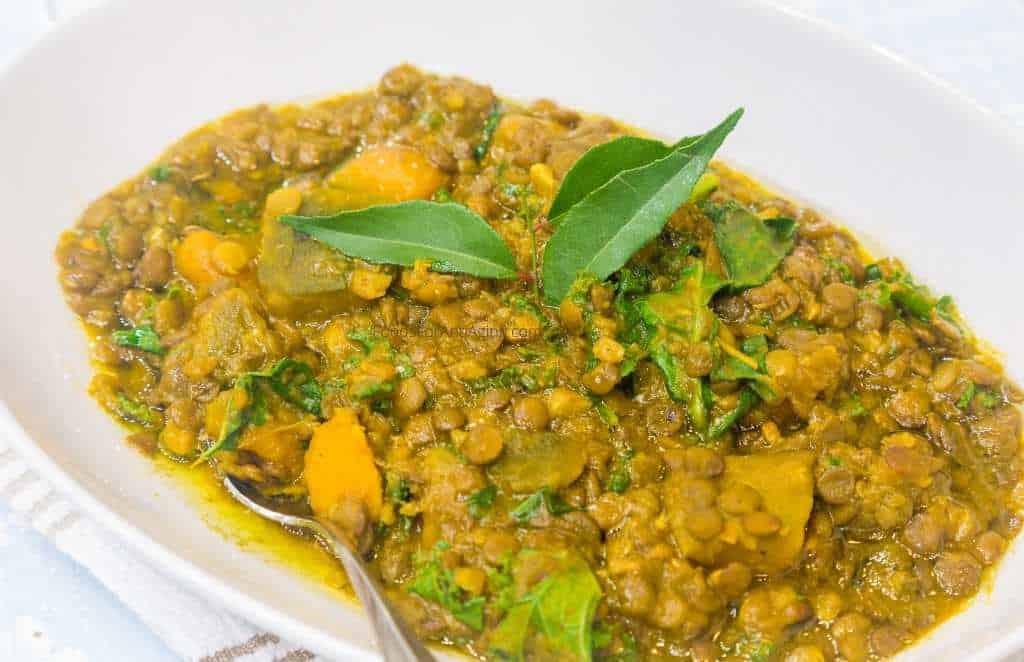
Many options for sweet potatoes are different due to flavor. Check those out in my article, Keto Substitute for Sweet Potatoes: 8 Healthy Substitutes.
13. Zucchini for a Low-Carb Diet
Zucchini has 3.1 grams of carbohydrates per 100 grams.
Let’s examine the carbohydrates and nutrients side-by-side:
| Potato, raw (100 g) | Zucchini, raw (100 g) | |
| Calories | 69 | 17 |
| Protein | 1.68 g | 1.21 g |
| Carbohydrates | 15.7 g | 3.1 g |
| Fiber | 2.4 g | 1.0 g |
| Fat | 0.10 g | 0.32 g |
| Sugar | 1.15 g | 2.50 g |
Nutrient Resources14
If your goal is low-carb recipes, zucchini is the best food on this list for low carb.
In addition, zucchini has more of the following:
- Calcium
- Vitamin A
- Vitamin C
- Folate
Being so low carb and calories you may be wondering why they aren’t discussed much. It’s because you won’t be able to make anything tasting like mashed or baked potatoes.
Although you can definitely use zucchinis to make fantastic fries or tots. If you eat fries often, you can swap out the potato for zucchini to get that same satisfaction.
You can bake, deep-fry or air-fry the zucchini getting nice crispy zucchini fries.
Some choices are different for Yukon Gold potatoes. Find out how in my article, Yukon Gold Potatoes Substitute: The 13 Best Alternatives.
The video below will inform you how to make zucchini fries.
Low-Carb Potato Keto Poll
To conduct some original research and get the opinions of real people, I polled my readers, clients and members of some food groups. I asked them what was the best low-carb potato substitute?
- 29% said the best one was turnips which was the winner of the low-carb poll.
If you have any questions about this Keto article don’t hesitate to email us. You can find an email on our contact page.
Read Next – More Potato Substitute Articles!
Potato Flakes Substitutes: The 17 Best Alternatives
Mashed Potato Substitutes: 15 Healthy Alternatives
8 Healthy Sweet Potato Flour Substitutes
Alternatives To Sweet Potatoes: 16 Unbeatable Substitutes
Is It Permissible To Substitute Fruit For Vegetables?
- USDA: Cauliflower, raw [↩]
- USDA: Turnips, raw [↩]
- USDA: Rutabagas, raw [↩]
- USDA: Daikon radish, cooked [↩]
- USDA: Potatoes, baked, flesh, with salt [↩]
- USDA: Celeriac, raw [↩]
- USDA: Squash, winter, butternut, raw [↩]
- USDA: Squash, winter, acorn, raw [↩]
- USDA: Broccoli, raw [↩]
- USDA: Kohlrabi, raw [↩]
- USDA: Brussels sprouts, raw [↩]
- USDA: Pumpkin, raw [↩]
- USDA: Kabocha Squash [↩]
- USDA: Squash, summer, zucchini, includes skin, raw [↩]
